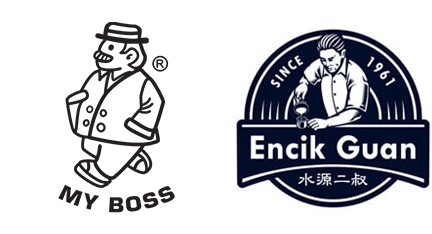Singapore nanyang coffee & tea dust
南洋咖啡与KOPI O的起源
在中国,“南洋” 一词的出现,可以追溯到中国明清时代 (1368年-1912年)。当时中国人口膨胀迅速,东南沿海与海南岛的许多居民只好持续往南、往西谋求新的耕地与住处,搭船到中南半岛沿海、菲律宾群岛、印尼群岛、马来西亚和新加坡等地经商、做工,通称为 “下南洋”。而 “南洋咖啡” 指的是在70多年前,50年代 (1950年-1959年) 开始在马来西亚与新加坡一带流行的咖啡饮料。
当时新马两地都属于英国殖民地。居住在这里的英国人所聘请的厨师助手大多数都是从中国下南洋的海南人,他们就从英国厨师的助手做起,成为华人西餐厨师,并且接触了西式咖啡的制作与冲泡技术。
若干年后,一些拥有创业精神的海南厨师开始经营起咖啡店的生意,并且发明了独特的 “海南咖啡”,后来被俗称为 “南洋咖啡”。当时新马两地的人口都以原住民马来民族为主,因此在咖啡店里售卖的加奶咖啡俗称 “KOPI”(马来语),无奶黑咖啡俗称 “KOPl-O”(马来语+海南语)。
The origin of Nanyang Coffee & KOPI O
In China, the representation of the term “Nanyang” can be traced back to the Ming and Qing Dynasties (1368-1912) of China. At that time, China’s population was expanding rapidly, and many residents on the Southeastern Coast and Hainan Island had to take a long journey to seek new farmlands and residences in Southeast Asia. Travel by sea, they sailed to the coast of the Indo-China Peninsula, the Philippine Islands, the Indonesia Islands, Malaysia and Singapore in search of trading and work, which is commonly known as “Xia Nanyang”. And “Nanyang Coffee” refers to about 70 years ago, a popular coffee drink in Malaysia and Singapore in the 1950s’ (1950-1959).
Both Singapore and Malaysia were British colonies at that time. The British living here are accustomed to hiring Hainanese from China to be their chef assistants. They started out as the assistants of British chefs and progressed to Chinese western chefs, thereby were in contact with the production and brewing skills of western-style coffee.
Years later, some Hainanese chefs with entrepreneurial spirit began to operate coffee shops and invented the unique “Hainan Coffee”, which was later commonly known as “Nanyang Coffee”. At that time, the populations of both Singapore and Malaysia were mainly aboriginal Malays, so the coffee with milk sold in coffee shops was commonly known as “KOPI” (Malay), and the black coffee without milk was commonly known as”KOPl-O” (Malay + Hainanese).



南洋咖啡与西式咖啡的区别
南洋咖啡是新马两地的特产,拥有大约100年的历史。 20世纪初,下南洋的中国海南移民整合了 “西式咖啡” 的烘焙技术,考量和融合本地人的口味与喜好,以不帶酸味的罗布斯达咖啡豆取代具酸味的阿拉比加咖啡豆,开发出加入白糖与牛油的咖啡烘焙技术。 每60公斤咖啡豆加入大约16 – 18公斤白糖和1 – 2公斤的牛油。形成带有焦糖味的咖啡,色泽更深、 口感更浓、更滑顺,使其苦中带甘,让人饮后齿颊留香。
据说咖啡是在大约1500年前的公元六世纪(501 – 600),在非洲埃塞俄比亚高原的南部被人发现,其具有提神醒脑的功效,而开始咀嚼咖啡豆或用水煮饮用。之后传到阿拉伯各国,並发展到用炒锅翻炒咖啡豆后磨成粉状冲泡饮用。于公元17世纪(1601 – 1700),大约三百多年前,咖啡开始传入英国及欧洲各地后,迅速疯狂流行並风靡于许许多多的西方国家。咖啡的制造与冲泡工艺的改进在西方国家里,被发挥得淋漓尽致,精益求精。“西式咖啡” 因此而得名。西式咖啡在新马两地也被俗称为白咖啡,其烘焙过程不加白糖和牛油,烘焙时间较短,火候较低,色泽较浅,但纯度更高、口味強烈带酸、口感丰富。
世界上的咖啡豆主要可分为三种 : 即阿拉比加(Arabica)、罗布斯达(Robusta)和利比利加(Liberica)。新加坡 “南洋咖啡” 以罗布斯达为主。马来西亚的 “南洋咖啡” 以利比利加为主。西式咖啡则以阿拉比加为主。
The difference between Nanyang Coffee & Western-style Coffee
Nanyang Coffee is a local specialty product of Singapore and Malaysia, with a history of about 100 years. In the 1950s’(1950-1959), Chinese immigrants from Hainan travelled to Nanyang and integrated the roasting technology of Western-style coffee. They researched the tastes and preferences of the local people by replacing sour Arabica beans with non-sour Robusta beans and incorporated the roasting techniques by adding sugar and butter. About 16-18 kg of sugar and 1-2 kg of butter were added for every 60 kg of coffee beans. This new technique resulted in a caramel filled coffee flavour, darker in colour, richer & smoother in taste and at the same time making it bitter & sweet, leaving the coffee drinker a pleasant aftertaste.
It is said that coffee was discovered in the southern part of the Ethiopian plateau in Africa about 1500 years ago in the 6th century AD (501-600) and was known to have a refreshing effect that people began to chew or boil the coffee beans for drinking. Subsequently, it spread to Arab countries with new techniques developed by stir-frying the coffee beans in a wok, grinding into powder and lastly brewing the coffee powder for drinking. In the 17th century AD (1601-1700), about 300 years ago, coffee was introduced into the United Kingdom and all parts of Europe and became wildly & rapidly popular, spreading across many Western countries. The improvement of coffee manufacturing and brewing technology in the western countries has been comprehensive and continues to strive for excellence. Hence, this is how Western-style Coffee name is derived from. Western-style Coffee is also commonly known as White Coffee in Singapore and Malaysia. The roasting process does not add sugar or butter and roasting time is shorter with lower heat, colour is also lighter but purity is higher with a stronger, slightly astringent sour taste yet rich in flavour.
There are three main types of coffee beans in the world: Arabica, Robusta and Liberica. Nanyang Coffee in Singapore uses mainly Robusta coffee beans whereas Nanyang Coffee in Malaysia is mostly using Liberica while Arabica is dominated by Western-style Coffee.
